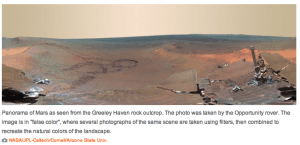Curiosity’s landing and the role of Mars exploration
People are waking up to cheerful news about the United States and space exploration this morning. At 1:32 a.m. Eastern Time NASA’s Curiosity rover successfully landed on the surface of Mars. NASA hopes the rover will carry out experiments designed to assess the viability of human missions to Mars in addition to researching if any life existed on the planet.
While enjoying this latest milestone, it is worth taking a look at the history of research on Mars to gather a better understanding of the role rovers play in space exploration.
The first autonomous robotic rover, Sojourner, was the proof-of-concept that helped with the design of future rovers – Spirit, Opportunity and Curiosity. Dr. Daniel Britt, UCF Associate Professor in Physics was one of the Sojourner project leaders. Britt’s work on Sojourner and its implications on the Curiosity rover are explained in this article for ARS Technica.

